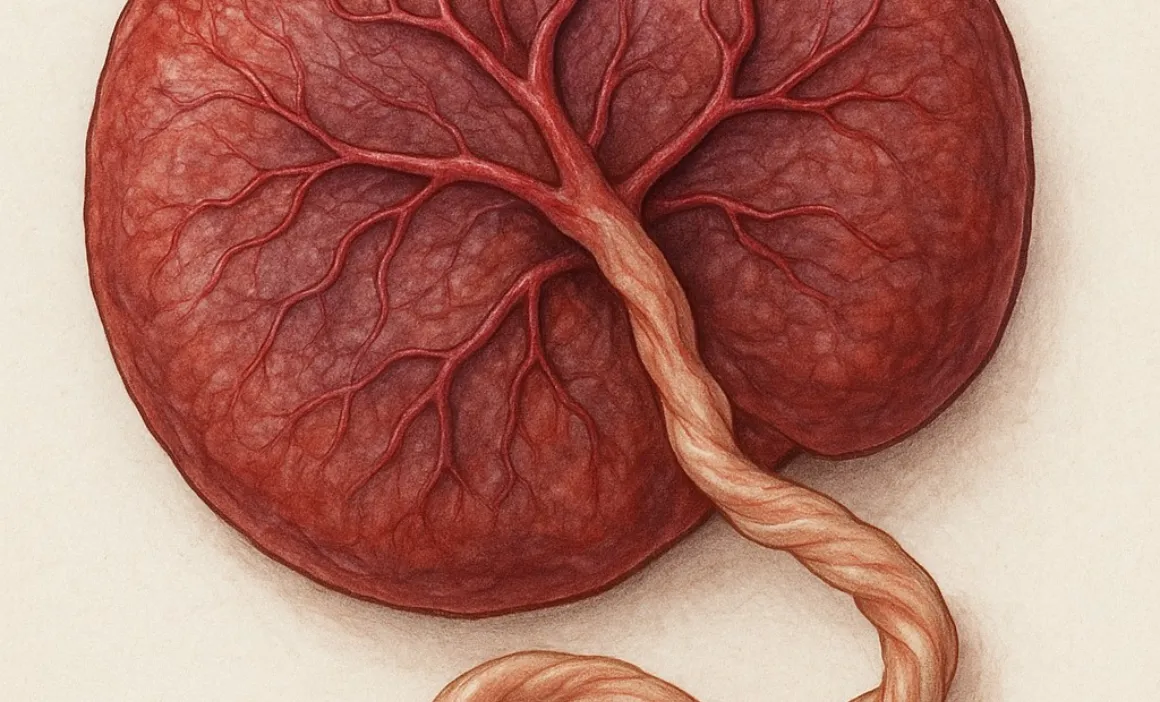
Pregnancy Body Changes Every Woman Should Know

Cradle of Nutrition
- 5 minutes read
Affiliate Disclosure: Some of the products listed below are affiliate links. Purchasing through them supports this blog at no extra cost to you.
This article has been reviewed by our gynecologist to ensure accurate and reliable information.
Pregnancy is a transformative journey that brings remarkable changes to a woman’s body. From hormonal fluctuations to physical growth, a woman’s body adapts in countless ways to nurture and protect a developing baby. Understanding these pregnancy transformations helps expecting mothers manage symptoms, prepare for delivery, and embrace the experience with confidence.
During early pregnancy, common changes in a pregnant body include morning sickness, fatigue, and heightened emotional sensitivity. Knowing what to expect can make these adjustments less stressful. For practical tips to ease nausea, check out our guide on morning sickness relief.
1. Hormonal Changes
Pregnancy hormones, particularly estrogen and progesterone, rise dramatically during the first trimester, driving many pregnancy body changes:
- Progesterone helps maintain the pregnancy by relaxing uterine muscles and slowing digestion, which can lead to bloating, constipation, or heartburn.
- Estrogen supports uterine growth, enhances blood flow, and contributes to skin and hair changes, such as increased pigmentation and thicker hair.
- These hormones also affect mood, causing emotional sensitivity or mood swings.
Expert tip: Gentle prenatal yoga or daily walking can stabilize mood and reduce stress. Using a prenatal yoga mat can make exercises more comfortable and safe during pregnancy.
2. Uterine Growth
One of the most visible body changes during pregnancy is the growth of the uterus:
- By the end of the first trimester, it is about the size of a grapefruit, expanding steadily as the baby develops.
- By the third trimester, it reaches the rib cage, pressing on organs like the stomach and intestines, which can contribute to heartburn, indigestion, and constipation.
- This pressure on the bladder also increases urinary frequency, particularly at night.
Comfort tip: Sleeping on your side with a pregnancy body pillow supports proper alignment, reduces lower back strain, and makes side-sleeping more comfortable.
3. Circulatory Changes
To ensure the baby receives adequate oxygen and nutrients, the circulatory system undergoes significant pregnancy transformations:
- Blood volume increases by 30–50%, requiring the heart to pump more efficiently.
- Heart rate can rise by 10–20 beats per minute, sometimes causing palpitations.
- Blood vessel expansion can lead to mild swelling, varicose veins, or visible veins on the skin.
Tip: Staying well-hydrated helps prevent circulation-related discomfort. An infuser water bottle can make hydration easier and more enjoyable. Regular short walks also improve circulation.
4. Weight Gain
Weight gain is a natural and necessary aspect of changes in a pregnant body:
- The average gain is 25–35 pounds (11–13 kg), but this varies depending on pre-pregnancy BMI and individual health.
- Weight gain includes the baby, placenta, amniotic fluid, breast tissue, blood, and fat stores to support breastfeeding.
- Gradual gain is important for the baby’s development and maternal health.
Tip: Track your nutrition and hydration with a water bottle with measurement markers to stay on top of healthy weight gain. Balanced meals with protein, fiber, and healthy fats are essential.
5. Skin and Hair Changes
Hormonal fluctuations can cause noticeable body transformations during pregnancy:
- Stretch marks may appear on the abdomen, breasts, hips, or thighs.
- Linea nigra, a dark vertical line on the abdomen, often develops.
- Hair may become thicker or grow faster, while some women notice skin pigmentation changes or acne flare-ups.
Tip: Moisturize daily and use sun protection to help manage skin changes. Gentle skincare products that are pregnancy-safe are recommended.
6. Digestive Changes
The digestive system slows down due to hormonal influences, contributing to pregnancy body changes:
- Slower digestion can lead to bloating, constipation, or acid reflux.
- Morning sickness often peaks during the first trimester but can persist longer in some women.
- Changes in appetite and food tolerance are common.
Learn more about managing nausea in our morning sickness relief guide.
Tip: Eat small, frequent meals, avoid greasy or spicy foods, and sip fluids throughout the day to reduce digestive discomfort.
7. Breast Changes
Breast changes are one of the earliest pregnancy transformations:
- Enlargement and tenderness as the mammary glands prepare for breastfeeding.
- Darkened nipples, more visible veins, and sensitivity are common.
Tip: Wearing a comfortable maternity bra provides support, reduces discomfort, and accommodates changing breast size throughout pregnancy.
8. Increased Urinary Frequency
As the uterus grows, it presses on the bladder, resulting in changes in a pregnant body such as:
- Frequent urination during the day and night.
- Increased urgency even with small fluid intake.
Tip: Empty your bladder regularly and adjust fluid intake in the evening while maintaining hydration during the day.
9. Joint and Muscle Changes
Pregnancy hormones, particularly relaxin, loosen ligaments and joints to prepare for childbirth:
- Can cause lower back pain, pelvic discomfort, and slight posture changes.
- May affect balance, requiring careful movement to avoid strain.
Strengthening the pelvic floor muscles can help support joints and improve postpartum recovery. Learn more about effective exercises in our guide to Kegels for pregnancy.
Tip: Gentle stretching, low-impact exercise, and supportive pillows help reduce discomfort. Light strengthening exercises for the back and core are beneficial.
10. Mental and Emotional Changes
Pregnancy brings emotional body transformations:
- Hormonal fluctuations can cause mood swings, anxiety, or heightened sensitivity.
- Excitement, joy, and anticipation are often mixed with stress or worry.
Tip: Ensure adequate sleep, practice mindfulness or meditation, and seek emotional support from loved ones or professionals. A pregnancy body pillow can also improve sleep quality and comfort.
FAQ: Pregnancy Body Changes
Q1: What are the first signs of pregnancy-related body changes?
Early changes include breast tenderness, mild fatigue, bloating, and nausea.
Q2: Why does posture change during pregnancy?
Weight gain and loosened joints shift your center of gravity. Simple posture exercises or supportive pillows help maintain comfort.
Q3: How can I reduce back or pelvic pain?
Gentle exercise, prenatal yoga, and supportive pillows can alleviate discomfort.
Q4: Are mood swings normal during pregnancy?
Yes, hormonal changes often cause emotional ups and downs. Support from loved ones is essential.
Q5: How much weight gain is considered healthy?
Depends on pre-pregnancy BMI. Most women gain 25–35 pounds, always consult your healthcare provider.
Q6: Why do I urinate more frequently?
The growing uterus presses on the bladder, especially in the third trimester.
Q7: How does pregnancy affect digestion?
Progesterone slows digestion, which can cause constipation or heartburn. Eating small meals and staying hydrated helps.
Q8: Can pregnancy affect skin and hair?
Yes, stretch marks, linea nigra, and thicker hair are common due to hormonal changes.
Q9: Is joint pain normal?
Yes, loosened ligaments can cause discomfort. Gentle exercises and supportive pillows help.
Q10: How can I support emotional well-being?
Balanced nutrition, sleep, light exercise, prenatal yoga, mindfulness, and emotional support all help.
Q11: Can I do Kegel exercises during pregnancy?
Yes! Kegels strengthen the pelvic floor muscles, improve bladder control, and prepare your body for childbirth.
Conclusion
Pregnancy brings profound body changes during pregnancy—from hormones and digestion to muscles, skin, and emotions. Every woman’s experience is unique, and understanding these pregnancy transformations can make the journey smoother and more comfortable.
By Erika Barabás






